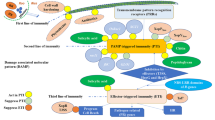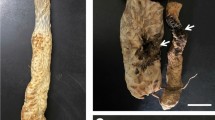Abstract
Aphids are regarded as important pest problems of vegetable crops worldwide. Most vegetable growers in sub-Saharan Africa heavily rely on synthetic chemical insecticides for aphids’ control. Fungus-based biopesticides are being considered as alternatives to chemical insecticides. This study evaluates virulence of five isolates of Metarhizium anisopliae and three of Beauveria bassiana against Brevicoryne brassicae, Lipaphis pseudobrassicae, and Aphis gossypii, and their thermotolerance and conidial yield as a prerequisite for strain selection. The study also evaluates performance of the best isolate in screenhouse experiment against target aphid species. Three isolates of M. anisopliae ICIPE30, ICIPE62, and ICIPE69 outperformed the others, causing mortality of 85–98 %, 83–97 %, and 73–77 %, in B. brassicae, L. pseudobrassicae, and A. gossypii, respectively, 7 days post-inoculation. Isolate ICIPE62 had the shortest LT50 values of 3.4, 2.5, and 2.6 days at 1 × 108 conidia ml−1, and the lowest LC50 values of 7.3 × 105, 9.3 × 104, and 3.0 × 104 conidia ml−1 on day 7 against A. gossypii, B. brassicae, and L. pseudobrassicae, respectively. Furthermore, ICIPE62 produced more conidia on the surface of aphid cadavers than ICIPE30 and ICIPE69 and showed wider thermotolerance with optimum ranges between 25 and 30 °C. Application of conidia of ICIPE62 formulated in aqueous and emulsifiable formulations negatively affected aphid population growth rate on kale and okra plants compared to controls in screenhouse experiments. These results have demonstrated the potential of M. anisopliae isolate ICIPE62 in suppression of A. gossypii, B. brassicae, and L. pseudobrassicae populations and could therefore be considered as biopesticide candidate for the control of these target aphids.






Similar content being viewed by others
References
Abbott W (1925) A method of computing the effectiveness of an insecticide. J Econ Entomol 18:265–267
Aktar W, Sengupta D, Chowdhury A (2009) Impact of pesticides use in agriculture: their benefits and hazards. Interdiscp Toxicol 2:1–12
Amnuaykanjanasin A, Jirakkakul J, Panyasiri C, Panyarakkit P, Nounurai P, Chantasingh D, Eurwilaichitr L, Cheevadhanarak S, Tanticharoen M (2013) Infection and colonization of tissues of the aphid Myzus persicae and cassava mealybug Phenacoccus manihoti by the fungus Beauveria bassiana. BioControl 58:379–391
Amoabeng BW, Gurr GM, Gitau CW, Nicol HI, Munyakazi L, Stevenson PC (2013) Tri-trophic insecticidal effects of African plants against cabbage pests. PLoS One 8:e78651
Banken J (1996) An ecotoxicological assessment of the neem insecticide, Neemix, on the pea aphid (Acyrthosiphon pisum Harris) and the seven-spot lady beetle (Coccinella septempunctata L.). Washington State University
Bayissa W, Ekesi S, Mohamed SA, Kaaya GP, Wagacha JR, Hanna M, Maniania NK (2016) Interactions among vegetable-infesting aphids, the fungal pathogen Metarhizium anisopliae (Ascomycota: Hypocreales) and the predatory coccinellid Cheilomenes lunata (Coleoptera: Coccinellidae). Biocontrol Sci Technol 26:274–290
Benz (1987) Environment. In: Fuxa JR, Tanada Y (eds) Epizootiology of insect diseases. Wiley, New York, pp 177–214
Birch LC (1948) The intrinsic rate of natural increase of an insect population. J Anim Ecol 17:15–26
Briere JF, Pracros P, Le Roux AY, Pierre JS (1999) A novel rate model of temperature-dependent development for arthropods. Environ Entomol 28:22–29
Bugeme DM, Maniania NK, Knapp M, Boga HI (2008) Effect of temperature on virulence of Beauveria bassiana and Metarhizium anisopliae isolates to Tetranychus evansi. Exp Appl Acarol 46:275–285
Bugeme DM, Knapp M, Boga HI, Wanjoya AK, Maniania NK (2009) Influence of temperature on virulence of fungal isolates of Metarhizium anisopliae and Beauveria bassiana to the two-spotted spider mite Tetranychus urticae. Mycopathol 167:221–227
Burgerjon A (1956) Pulvérisation de poudrage au laboratoire par des préparations pathogèènes insecticides. Annales des Epiphyties 4:677–688
Campbell A, Frazer BD, Gilbert NE, Gutierrez AP, Mackauer M (1974) Temperature requirements of some aphids and their parasites. J Appl Entomol 11:431–438
Cherry AJ, Gwynn RL (2007) Perspectives on the development of biological control agents in Africa. Biocontrol Sci Technol 17:665–676
Davidson G, Phelps K, Sunderland K, Pell J, Ball B, Shaw K, Chandler D (2003) Study of temperature–growth interactions of entomopathogenic fungi with potential for control of Varroa destructor (Acari: Mesostigmata) using a nonlinear model of poikilotherm development. J Appl Microbiol 94:816–825
Dimbi S, Maniania NK, Lux SA, Ekesi S, Mueke JK (2003) Pathogenicity of Metarhizium anisopliae (Metsch.) Sorokin and Beauveria bassiana (Balsamo) Vuillemin, to three adult fruit fly species: Ceratitis capitata (Weidemann), C. rosa var. fasciventris Karsch and C. cosyra (Walker) (Diptera: Tephritidae). Mycopathol 156:375–382
Dimbi S, Maniania NK, Lux SA, Mueke JM (2004) Effect of constant temperatures on germination, radial growth and virulence of Metarhizium anisopliae to three species of African tephritid fruit flies. BioCon 49:83–94
Ekesi S, Maniania N, Onu I, Löhr B (1998) Pathogenicity of entomopathogenic fungi (Hyphomycetes) to the legume flower thrips, Megalurothrips sjostedti (Trybom)(Thysan., Thripidae). J Appl Entomol 122:629–634
Ekesi S, Maniania N, Ampong-Nyarko K (1999) Effect of temperature on germination, radial growth and virulence of Metarhizium anisopliae and Beauveria bassiana on Megalurothrips sjostedti. Biocontrol Sci Technol 9:177–185
Fargues J, Bon MC (2004) Influence of temperature preferences of two Paecilomyces fumosoroseus lineages on their co-infection pattern. J Invertebr Pathol 87:94–104
Fargues J, Maniania N, Delmas J, Smits N (1992) Influence de la température sur la croissance in vitro d’hyphomycètes entomopathogènes. Agronomie 12:557–564
Gomez KA, Gomez AA (1984) Statistical procedures for agricultural research. Wiley, New York
Hall R, Papierok B (1982) Fungi as biological control agents of arthropods of agricultural and medical importance. Parasitol 84:205–240
Hesketh H, Roy H, Eilenberg J, Pell J, Hails R (2010) Challenges in modelling complexity of fungal entomopathogens in semi-natural populations of insects. BioCon 55:55–73
Ibrahim L, Butt T, Beckett A, Clark S (1999) The germination of oil-formulated conidia of the insect pathogen, Metarhizium anisopliae. Mycol Res 103:901–907
Inglis GD, Goettel MS, Butt TM, Strasser H (2001) Use of hyphomycetous fungi for managing insect pests. In: Butt TM, Jackson C, Magan N (eds) Fungi as biocontrol agents: progress, problems and potential. CAB International, Wallingford, pp 23–69
Jandricic S, Filotas M, Sanderson J, Wraight S (2014) Pathogenicity of conidia-based preparations of entomopathogenic fungi against the greenhouse pest aphids Myzus persicae, Aphis gossypii, and Aulacorthum solani (Hemiptera: Aphididae). J Invertebr Pathol 118:34–46
Kabaluk, JT, Svircev, AM, Goettel, MS, Woo, SG (eds) (2010) The use and regulation of microbial pesticides in representative jurisdictions worldwide. Retrieved from http://www.iobcglobal.org/publications.html#microbial_regulation_book
Loureiro EdS, Moino A Jr (2006) Pathogenicity of hyphomycet fungi to aphids Aphis gossypii Glover and Myzus persicae (Sulzer)(Hemiptera: Aphididae). Neotrop Entomol 35:660–665
Maniania NK (1993) Evaluation of three formulations of Beauveria bassiana (Bals.) Vuill. for control of the stem borer Chilo partellus (Swinhoe) (Lep., Pyralidae). J Appl Entomol 115:266–272
Maniania NK, Fargues J (1992) Susceptibility of Mamestra brassicae (L.), and Spodoptera littoralis (Boisd.) larvae (Lep., Noctuidae) to the Hyphomycetes Paecilomyces fumosoroseus (Brown and Smith) and Nomuraea rileyi (Samson) at two temperatures. J Appl Entomol 113:518–524
Migiro L, Maniania N, Chabi-Olaye A, Vandenberg J (2010) Pathogenicity of entomopathogenic fungi Metarhizium anisopliae and Beauveria bassiana (Hypocreales: Clavicipitaceae) isolates to the adult pea leafminer (Diptera: Agromyzidae) and prospects of an autoinoculation device for infection in the field. Environ Entomol 39:468–475
Moore D, Prior C (1993) The potential of mycoinsecticides. Biocontrol News Inf 14:31–40
Niassy S, Maniania N, Subramanian S, Gitonga L, Mburu D, Masiga D, Ekesi S (2012) Selection of promising fungal biological control agent of the western flower thrips Frankliniella occidentalis (Pergande). Lett Appl Microbiol 54:487–493
Nyambo B, Löhr B (2005) The role and significance of farmer participation in biocontrol-based IPM for brassica crops in East Africa. In: Hoddle, MS (ed), Proceedings of the second international symposium on biological control of arthropod, 12–16 September 2005, pp. 290–301. USDA forest service publication FHTET-2005-08, Davos, Switzerland
Ondiaka S, Maniania N, Nyamasyo G, Nderitu J (2008) Virulence of the entomopathogenic fungi Beauveria bassiana and Metarhizium anisopliae to sweet potato weevil Cylas puncticollis and effects on fecundity and egg viability. Ann Appl Biol 153:41–48
Oruku L, Ndung’u B (2001) Final socio-economic report for the peri-urban vegetable IPM thematic cluster. CAB International, Africa Regional Centre Report, Nairobi 49
Ouedraogo A, Fargues J, Goettel M, Lomer C (1997) Effect of temperature on vegetative growth among isolates of Metarhizium anisopliae and M. flavoviride. Mycopathol 137:37–43
Ravensberg W J (2011) A roadmap to the successful development and commercialization of microbial pest control products for control of arthropods. Springer Science & Business Media
R Development Core Team (2011) R: a language and environment for statistical computing. R foundation for statistical computing, Vienna, Austria. http://www.R-project.org
Sæthre M-G, Godonou I, Hofsvang T, Tepa-Yotto G, James B (2011) Aphids and their natural enemies in vegetable agroecosystems in Benin. Int J Trop Insect Sci 31:103–117
SAS Institute (1999–2001) SAS/STAT User’s Guide, Version. SAS Institute Inc, Cary, NC
SAS Institute (1999–2001) SAS/STAT User’s Guide, Version 8.01. Cary, NC, USA: SAS Institute Inc
Shan LT, Feng MG (2010) Evaluation of the biocontrol potential of various Metarhizium isolates against green peach aphid Myzus persicae (Homoptera: Aphididae). Pest Manag Sci 66:669–675
Sithanantham S, Ampong-Nyarko K, Seshu-Reddy K, Ampong-Nyarko K, Varla A, Maniania N, Lako G, Baumgartner J (1997) IPM for export vegetables. ICIPE Science Press, Nairobi
Spence N, Phiri N, Hughes S, Mwaniki A, Simons S, Oduor G, Chacha D, Kuria A, Ndirangu S, Kibata G (2007) Economic impact of Turnip mosaic virus, Cauliflower mosaic virus and Beet mosaic virus in three Kenyan vegetables. Plant Pathol 56:317–323
Stark JD, Banks JE (2003) Population-level effects of pesticides and other toxicants on arthropods. Ann Rev Entomol 48:505–519
Stokes ME, Davis CS, Koch GG (2000) Categorical data using the SAS system. SAS Institute Inc, Cary NC
Throne JE, Weaver DK, Chew V, Baker JE (1995) Probit analysis of correlated data: multiple observations over time at one concentration. J Econ Entomol 88:1510–1512
Van Emden HF, Harrington R (2007) Aphids as crop pests. CAB Iternational, Wallingford
Waiganjo M, Waturu C, Mureithi J, Muriuki J, Kamau J, Munene R (2011) Use of entomopathogenic fungi and neem bio-pesticides for Brassica pests control and conservation of their natural enemies. East Afr Agric Forestry J 77:545–549
Walthall WK, Stark JD (1997) Comparison of two population-level ecotoxicological endpoints: The intrinsic (rm) and instantaneous (ri) rates of increase. Environ Toxicol Chem 16:1068–1073
Wekesa VW, Maniania NK, Knapp M, Boga HI (2005) Pathogenicity of Beauveria bassiana and Metarhizium anisopliae to the tobacco spider mite Tetranychus evansi. Exp Appl Acarol 36:41–50
Williamson S, Ball A, Pretty J (2008) Trends in pesticide use and drivers for safer pest management in four African countries Crop Protec 27:1327–1334
Wraight SP, Hajek AE (2009) Manipulation of arthropod pathogens for IPM. Concepts, tactics, strategies and case studies. In: Radcliffe EB, Hutchison WD and Cancelado RE (eds) integrated pest management, Cambridge University Press pp. 131–150
Yeo H, Pell JK, Alderson PG, Clark SJ, Pye BJ (2003) Laboratory evaluation of temperature effects on the germination and growth of entomopathogenic fungi and on their pathogenicity to two aphid species. Pest Manag Sci 59:156–165
Zalucki M, Shabbir A, Silva R, Adamson D, Furlong M, Shu-sheng L (2012) Estimating the economic cost of one of the world’s major insect pests, Plutella xylostella (Lepidoptera : Plutellidae): just how long is a piece of string? Econ Entomol 105:1115–1129
Acknowledgments
The first author received a PhD fellowship stipend from the German Academic Exchange Service/Deutcher Akademischer Austausch Dienst (DAAD) through the African Regional Postgraduate Programme in Insect Science (ARPPIS) of icipe. Operational research activities was funded by German Ministry of Economic Cooperation and Development (BMZ) through a joint International Institute of Tropical Agriculture (IITA)/icipe/World Vegetable Centre/Friedrich-Schiller-University of Jena project on “Enhancing horticultural productivity, incomes and livelihoods through integrated management of aphid pests on vegetables in sub-Saharan Africa.” The authors are thankful for statistical advice of Mr. Benedict Orindi and Dr. Daisy Salifu and technical assistance of Mr. Peterson Nderitu and Mr. Gordon Otieno.
Author information
Authors and Affiliations
Corresponding author
Additional information
Communicated by E. Quesada-Moraga.
Rights and permissions
About this article
Cite this article
Bayissa, W., Ekesi, S., Mohamed, S.A. et al. Selection of fungal isolates for virulence against three aphid pest species of crucifers and okra. J Pest Sci 90, 355–368 (2017). https://doi.org/10.1007/s10340-016-0781-4
Received:
Revised:
Accepted:
Published:
Issue Date:
DOI: https://doi.org/10.1007/s10340-016-0781-4




